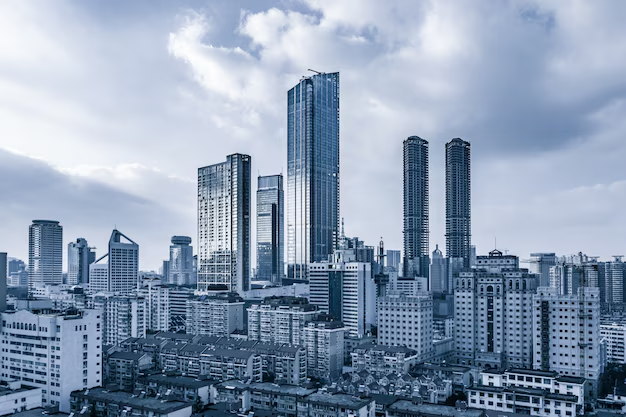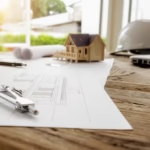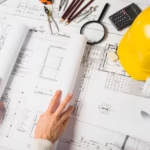The future of architecture is being defined by two key forces: sustainability and technology. As global challenges such as climate change, resource depletion, and urbanization intensify, architects and urban planners are increasingly turning to innovative solutions that promote environmental responsibility, efficiency, and adaptability. By incorporating sustainable practices and cutting-edge technologies, buildings of the future will not only serve as spaces for living and working but also as models of ecological stewardship and resilience. This article explores how sustainability and technology will shape the architecture of tomorrow.
1. Sustainable Architecture: Designing for a Greener Future
Sustainability is no longer just a buzzword in architecture; it is a central tenet of design that seeks to minimize the environmental impact of buildings throughout their entire lifecycle—from construction and operation to demolition and recycling. As the demand for greener buildings grows, architects are embracing strategies that use fewer resources, reduce energy consumption, and create healthier environments for occupants.
1.1 Energy-Efficient Buildings
One of the most significant aspects of sustainable architecture is energy efficiency. As energy consumption in buildings accounts for a substantial portion of global greenhouse gas emissions, reducing energy demand is a critical goal.
- Passive Design Strategies: Passive design focuses on harnessing natural energy sources, such as sunlight and wind, to regulate a building’s temperature and lighting. For example, buildings can be oriented to maximize natural daylight and reduce reliance on artificial lighting. Insulation and high-performance windows help maintain comfortable indoor temperatures without excessive heating or cooling.
- Energy-Efficient Technologies: Future buildings will rely heavily on smart technologies and energy-efficient systems, such as advanced HVAC (heating, ventilation, and air conditioning) units, LED lighting, and automated energy management systems. These technologies will reduce energy consumption and allow for real-time monitoring of energy use, leading to more efficient operation.
- Renewable Energy Integration: Solar panels, wind turbines, and other renewable energy systems will become commonplace in modern buildings. These systems can be integrated into building designs to provide power on-site, reducing reliance on external sources of energy and lowering a building’s carbon footprint.
1.2 Sustainable Materials and Construction Methods
Sustainability in architecture extends beyond energy efficiency to include the materials and construction methods used. Architects are exploring alternatives to conventional materials that are resource-intensive or environmentally harmful.
- Eco-Friendly Materials: New materials such as recycled concrete, cross-laminated timber, and sustainable insulation are gaining popularity. These materials are sourced sustainably, reduce waste, and often have a lower environmental impact compared to traditional building materials.
- Circular Construction: The concept of a circular economy is taking hold in architecture, which aims to reduce waste by reusing materials, designing buildings for easy disassembly, and incorporating recyclable materials. Buildings will be constructed with the intention of being fully recyclable at the end of their lifespan, which will drastically reduce landfill waste and promote material efficiency.
- Low-Carbon and Biodegradable Materials: Bio-based materials, such as hempcrete (hemp-based concrete), are gaining attention for their low carbon footprint and sustainability. These materials also offer unique properties, like natural insulation, which can improve a building’s energy efficiency.
1.3 Water Conservation and Management
Water use is another area where architecture is evolving toward sustainability. In the face of growing water scarcity, efficient water management in buildings is becoming a priority.
- Rainwater Harvesting: Buildings of the future will increasingly incorporate rainwater harvesting systems, which collect and store rainwater for non-potable uses such as irrigation and toilet flushing. This reduces demand on municipal water systems and conserves water resources.
- Water-Efficient Fixtures: The use of water-efficient plumbing fixtures, such as low-flow faucets and toilets, will be standard in sustainable buildings. These technologies can reduce water consumption significantly, even in large commercial or residential buildings.
- Green Roofs and Living Walls: Green roofs and living walls are systems that help absorb rainwater, reduce the heat island effect, and improve air quality. By integrating vegetation into buildings, architects are promoting biodiversity and improving the overall environmental impact of urban spaces.
2. The Role of Technology in Shaping Architecture
As technology continues to advance at an unprecedented rate, it is profoundly reshaping the field of architecture. From the tools used to design buildings to the materials that make up the structures, technology is enabling architects to push the boundaries of what’s possible.
2.1 Smart Buildings and Automation
The concept of a smart building involves the integration of cutting-edge technologies that enhance building performance, increase energy efficiency, and improve the quality of life for inhabitants. These systems collect data, analyze trends, and automate functions to optimize how a building operates.
- Building Automation Systems (BAS): Smart buildings use BAS to control lighting, HVAC, security, and other systems. These systems can adjust in real time based on occupancy, weather, and energy usage patterns, ensuring that resources are used efficiently and effectively.
- Smart Lighting and Climate Control: IoT (Internet of Things) sensors and devices will allow for adaptive lighting and climate control in buildings. For instance, lights can automatically adjust based on natural light levels, and heating or cooling systems can be fine-tuned to individual preferences or occupancy patterns.
- Integrated Energy Systems: Smart buildings will also incorporate energy storage and grid interaction systems, enabling them to store excess energy generated by renewable sources like solar panels and feed it back into the grid when needed. This creates a more resilient and decentralized energy system.
2.2 Parametric Design and 3D Printing
Technology is changing how architects design and build. Parametric design and 3D printing are two groundbreaking tools that will play a significant role in the future of architecture.
- Parametric Design: This design process uses algorithms and computational methods to create highly complex and adaptable building forms. Parametric design allows architects to explore more efficient structures, optimize energy usage, and integrate complex geometric shapes that would be difficult to design using traditional methods.
- 3D Printing: 3D printing technology is revolutionizing construction by enabling the creation of custom-designed building components quickly and with less material waste. In the future, entire buildings may be 3D printed, reducing labor costs, construction time, and material consumption. 3D printing also allows for the use of innovative materials that can be customized for different climates and building needs.
2.3 Virtual Reality (VR) and Augmented Reality (AR)
Virtual Reality (VR) and Augmented Reality (AR) are transforming the design and construction process. These immersive technologies provide architects, clients, and contractors with the ability to visualize and experience buildings before they are constructed.
- VR for Design Visualization: Architects can use VR to create immersive, interactive 3D models of buildings, allowing them to experiment with different design options, layouts, and finishes. This helps to better understand how a space will feel and function before making final decisions.
- AR for On-Site Construction: AR technology can overlay digital information onto the physical environment. For construction teams, this means they can visualize the building’s structure and components in real time, ensuring accuracy and reducing mistakes on-site.
3. Urbanization and the Future of Smart Cities
As cities continue to grow and urban populations increase, the future of architecture will need to accommodate more people and build in a way that is both sustainable and smart.
- Smart Cities: The concept of a smart city involves the integration of digital technologies across urban infrastructure to improve efficiency, sustainability, and quality of life. Buildings in smart cities will be connected to the grid, share data, and operate with greater coordination to manage resources, reduce waste, and enhance public services.
- Sustainable Urban Planning: Architects and urban planners will increasingly collaborate to design cities that are energy-efficient, socially inclusive, and ecologically responsible. This includes creating mixed-use neighborhoods, reducing urban sprawl, and promoting public transport to minimize the environmental footprint of cities.
- Resilient Architecture: In the face of climate change, urban architecture must become more resilient to extreme weather events, rising sea levels, and other environmental challenges. This involves designing buildings and cities that can adapt to changing conditions, such as using flood-resistant materials or creating green infrastructure to absorb stormwater.
4. Conclusion: A Vision for the Future
The future of architecture will be shaped by an exciting synergy of sustainability and technology. Buildings will no longer simply serve as shelters; they will become responsive, energy-efficient, and resilient structures that work in harmony with the natural environment. Sustainable practices and cutting-edge technologies will not only reduce the environmental impact of buildings but also improve the quality of life for their occupants.
As architects, engineers, and urban planners continue to push the boundaries of innovation, the buildings of tomorrow will serve as models of ecological responsibility and technological advancement, helping to create a more sustainable, efficient, and connected world.




